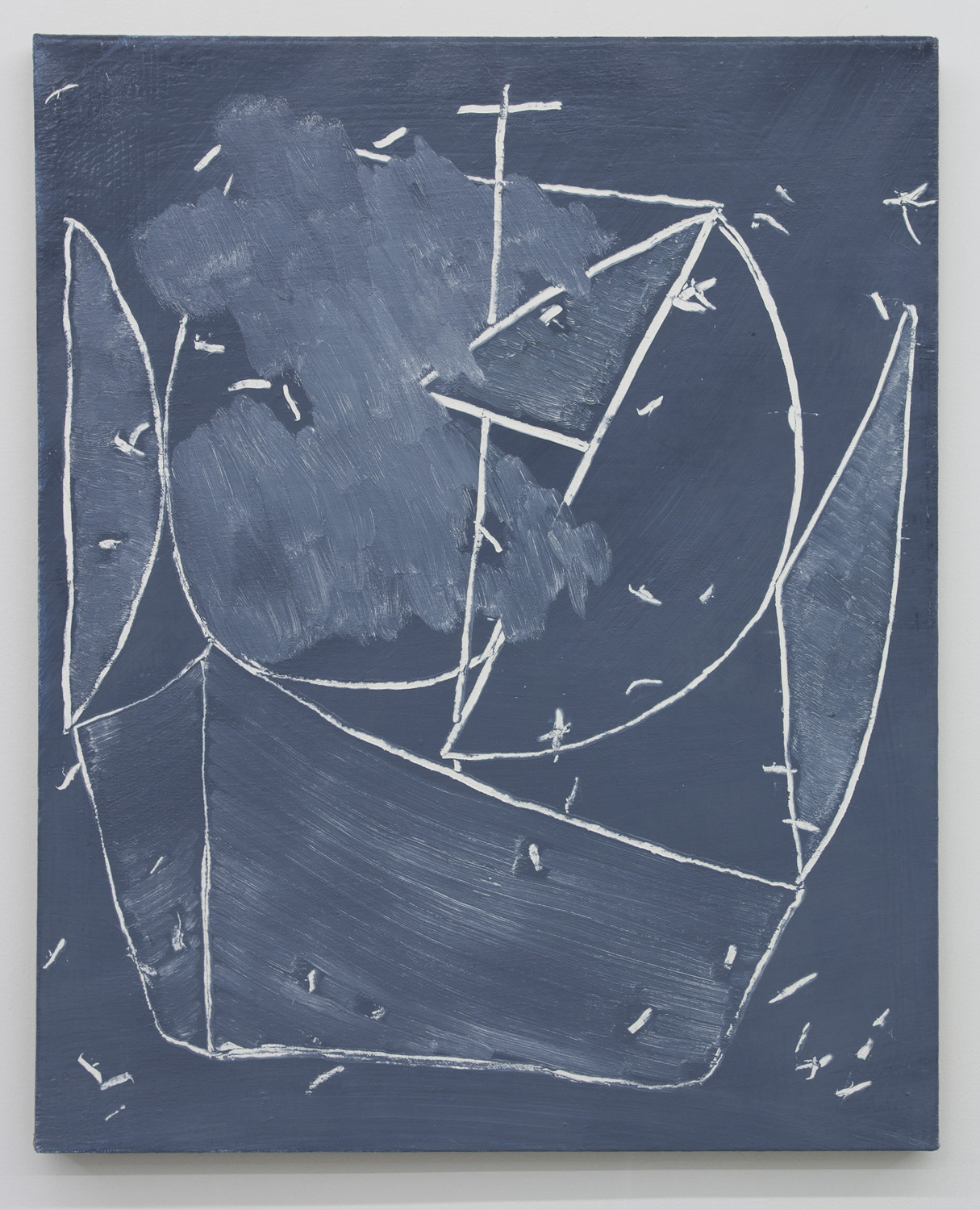CLINTON KING: OPEN ENDED
JANUARY 9, 2015 – FEBRUARY 15, 2015
Clinton King’s responsive practice is an exploration in open process and focuses on the nature of transformation. With abiding interests in psychoanalysis and sleight of hand, he investigates the uncanny logic inherent in misdirection and interpretation. King’s practice navigates a variety of processes and color palettes to create both flat and airy spaces, conveying a sense of immediate and ever-present time. He says, “The ‘magic’ happens when patterns are established through repetition, then broken.” Clinton King lives and works in Brooklyn, New York.
A conversation between Clinton King and Transmitter.
Transmitter: When looking at your works there seems to be a back-and-forth between the illusionistic and the material qualities of paint. Can you describe how these different qualities play a part in your thought process and in your painting process?
Clinton King: For me both variations arise naturally from the act of painting. For example; the “illusionistic” paintings often occur when a work resolves quickly—when this happens surfaces tend to be flat and can easily fall back to create an open “space.” Sometimes I stop at this phase, but if a solution doesn’t present itself I’ll keep working; as the paint accumulates so does its materiality, so again I respond accordingly.
T/R: Could you say something about your painting techniques? Painters tend to develop very specific ways of applying and manipulating their materials to determine their results. Is there a set of techniques you would call specifically yours and could you describe how it determines your end result?
CK: I try to stop myself from relying too much on a particular set of techniques; personally I feel that works that rely too much on technique lack freshness and spirit. That being said . . . I have developed a number of techniques, some I use so often that I’m currently developing new techniques to get out of them. Sometimes I start with a particular technique, other times I might finish on one. Again, I’m about natural response, so if a technique works I'll use it if it feels right at that moment.
T/R: When looking at your color choices there seems to be a more muted palette, at times leaning towards darker tones, but then sometimes it appears that brighter, more primary-based colors were applied at a later stage in the process. Is this a conscious back-and-forth of looking and responding? Is your color palette intrinsic to your technique, or do you have any specific color combination in mind when you start a new painting?
CK: Color to me is very important, but I rarely approach with a preemptive scheme. My choices are almost always intuitive—you could almost explain my entire art-making process in this way. In color as well as composition I try to stay as receptive as possible so the decisions arise in the process. I have a deep interest in the unconscious mind and work closely with my own; perhaps my colors choices reflect this. It’s all about self-discovery; in this light you could say my colors are found rather than created.
T/R: Do you see the work before you make it? Is there an image or a texture that you start from before making the painting?
CK: This is a tough question . . . yes and no. . . . I love working in blind process because it offers so much possibility, but inevitably the more you progress the more conscious you become of your tricks. The problem is tricks work but eventually you find yourself in a pattern. I have a love/hate relationship to pattern, mainly because I've found stagnation and spontaneity in both strategy and chaos. So I spend a month weaving a rug just so I can pull it out from under myself the moment it gets boring. It prevents the work from getting old.
T/R: Your work has a freshness and unity to it, with unique compositions and strokes in every painting—how do you group the works, or do you see them as all individual pieces outside the context of a series?
CK: Being that my practice is so mercurial I rarely set out to create works sequentially in a particular style (although I realize this upcoming show is an exception) more often than not multiple groups organize organically over a period of time.
T/R: Do you see painting as a ritual?
CK: Yes, all art-making is ritual in the sense that it’s a repetitious irrational act supported by culture. I think evidence of this is seen in the art market, where symbolic objects are purchased for sacrificial large sums as a measure of devotion. It's interesting relationship to think about, whether conscious of it or not, the artist and buyer are both deeply involved in this symbiotic/symbolic ritual.
T/R: You were supposed to have the show earlier this year at Parallel Art Space, before the gallery closed. How has your thinking about this work changed since the original scheduled show? Does the architecture of the new space change your feeling about the works?
CK: For me the delay was very serendipitous . . . I (and the work) have gone through changes that are for the better. For starters I’ve have more time to paint and the work shows it, the paintings feel more resolved and my approach more solidified. As for the space . . . I won’t really know until the work is there. Sometimes a space can make all the decisions for you.









